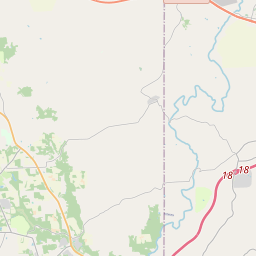Armstrong County Civil War Memorial
Historical marker location:






April 12, 1861: The Civil War begins with the Confederate attack on Fort Sumter, located in South Carolina's Charleston Harbor.
April 15, 1861: President Abraham Lincoln issues a call for 75,000 volunteers to serve in the Union Army to suppress the rebellion.
May 24, 1861: The first major land battle, known as the First Battle of Bull Run (or First Battle of Manassas), takes place in Virginia. It ends in Confederate victory.
September 17, 1862: The Battle of Antietam in Maryland becomes the bloodiest single-day battle in American history, with heavy casualties on both sides. The Union forces, commanded by General George McClellan, manage to halt Confederate General Robert E. Lee's advance into Union territory.
January 1, 1863: President Lincoln issues the Emancipation Proclamation, declaring that all slaves in Confederate-held territories are to be set free. However, the proclamation does not immediately free all slaves in the United States.
July 1-3, 1863: The Battle of Gettysburg in Pennsylvania takes place, resulting in a significant Union victory and inflicting heavy casualties on Confederate forces. It marks a turning point in the war.
November 19, 1863: President Lincoln delivers the Gettysburg Address, emphasizing the principles of liberty, equality, and the preservation of the Union.
April 9, 1865: General Robert E. Lee surrenders to Union General Ulysses S. Grant at Appomattox Court House in Virginia, effectively ending the Civil War.
April 14, 1865: President Lincoln is assassinated by John Wilkes Booth while attending a play at Ford's Theatre in Washington, D.C.
May 10, 1865: Confederate President Jefferson Davis is captured, signaling the collapse of the Confederate government.
December 6, 1865: The Thirteenth Amendment to the United States Constitution is ratified, officially abolishing slavery throughout the country.
While this timeline provides an overview of key events, it is important to note that the Civil War spanned over four years, from 1861 to 1865, and encompassed numerous battles, campaigns, and political developments that shaped the course of American history.
More history nearby
Philadelphia is home to the oldest continuously operating farmers' market in the United States, the Reading Terminal Market, which opened in 1893.
In the mid-1700s, European settlers began to arrive in the area, with the earliest recorded settlement being established in 1753. The county was named after General John Armstrong, who served during the American Revolutionary War. Throughout the 19th century, Armstrong County experienced significant growth, particularly in the coal and iron industries. The discovery of coal in the region led to the establishment of thriving mining towns and the growth of the railroad industry, which played a crucial role in transporting goods and people.
During the Civil War, Armstrong County contributed many soldiers to the Union Army and was an important supplier of iron and coal to support the war effort. The county also played a role in the Underground Railroad, with several abolitionists assisting runaway slaves seeking freedom. Following the war, industrialization continued to shape the county's economy, with new industries such as glass manufacturing and lumber mills emerging.
In the 20th century, Armstrong County faced challenges with the decline of the coal and steel industries. However, the county has adapted and diversified its economy, focusing on industries such as healthcare, education, and agriculture. Today, Armstrong County is a mix of urban and rural areas, offering its residents a blend of natural beauty and modern amenities. Its rich history and strong sense of community continue to be cherished by its residents, making Armstrong County a unique and vibrant place to call home.
Armstrong County Timeline
This timeline provides a concise overview of the key events in the history of Armstrong County, Pennsylvania.
- 1700s - Native American tribes, including the Iroquois, inhabited the area that is now Armstrong County.
- Late 1700s - European settlers, mostly of Scottish and Irish descent, began to establish homesteads in the region.
- 1800 - The area was part of Allegheny County until Armstrong County was officially formed on March 12, 1800.
- 1846 - The Pennsylvania Canal, which passed through Armstrong County, was completed, boosting trade and transportation in the region.
- 1855 - The discovery of coal in the county led to an economic boom, with numerous mines opening and attracting many workers.
- Mid-1800s - The Pennsylvania Railroad was constructed, further facilitating transportation and industrial growth in Armstrong County.
- 1860s - Armstrong County supported the Union during the American Civil War, with many residents serving in the military.
- 1920s-1930s - Prohibition led to the rise of illegal activities such as moonshining and bootlegging in Armstrong County.
- Mid-1900s - The decline of the coal mining industry resulted in economic challenges for Armstrong County.
- 1980s-present - Efforts to revitalize the county's economy have focused on diversification and the development of tourism and recreational activities.